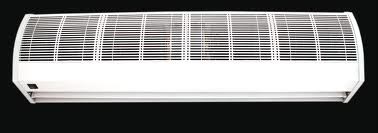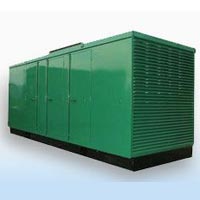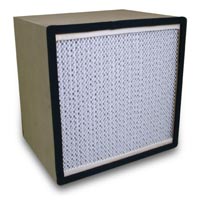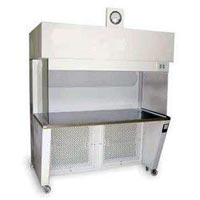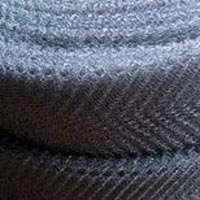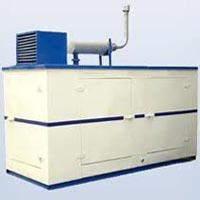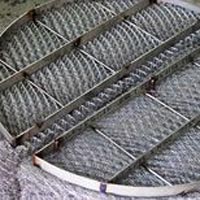- GST NO. : 27AIBPN9094J1ZP
| Business Type | Manufacturer, Exporter, Supplier, Retailer |
An air door or air curtain is a device used for separating two spaces from each other, usually at the exterior entrance. The most common configuration for air curtains is a downward-facing blower fan mounted over an opening, blowing air across the surface of the opening. Air Curtains can come with, or without heaters to heat the air. Normally the opening is an entrance to a building, or opening between two space conditioned at difference temperatures. Air curtains can serve many purposes. They can be intended to help keep flying insects out by creating forceful turbulence. It also helps keep out outside air, reducing infiltration though the opening. They can also be used to avoid cold drafts by mixing in warm air heated by the air curtain. The fan must be powerful enough to generate a jet of air that can reach the floor.
Air curtains are utilized when a barrier is needed across an opening, and when reducing energy costs is desired. Some applications include customer entryways, airplane hangars, cargo doors, drive through windows, restaurant doors, or shipping receiving doors. The air stream the air curtain places across the opening creates an invisible barrier to contain an air conditioned space and reduce infiltration. Typically, an air curtain can pay for itself in one to two years by reducing the load on the building's heating or air conditioning system. Usually, there is a mechanism, such as a door switch, to turn the unit on and off as the door opens and closes, so the Air Curtain only operates when the door is open. Heated Air curtains are commonly used when supplemental heat is needed for a space, and to reduce the wind chill factor across the opening in colder climates. Air Curtains work best when the pressure differential between the inside and outside of the building is as close to neutral as possible. Negative pressures, extreme temperature differences, elevators in close proximity, or extreme humidity can reduce the effectiveness of Air Curtains.
The most effective air curtain for containing heated or cooled air inside a building with an open door will have a high face velocity at the opening, generated by top-down flow, recovered by a recirculating air plenum and duct return to the source fans. This configuration is available for new construction, but difficult to provide in existing buildings. The air curtain is most effective with low exterior wind velocity. At higher wind velocities, the rate of air mixing increases and the outside air portion of the total face flow increases. Under ideal conditions of zero wind, the effectiveness of the air curtain is at its maximum. In windy locations air curtains cannot create a perfect seal, but are often used to reduce the amount of infiltration from an opening.
For industrial conditions, high face velocities are acceptable. For commercial applications like store entrances, user comfort dictates low face velocities, which reduce effectiveness of separation of exterior air from interior air.
Non-heated air curtains are often used in conjunction with cold storage and refrigerated rooms. Airflow through a door depends on wind forces, temperature differences (convection), and pressure differences.
Air curtains can be used to save energy by reducing the heat transfer (via mass transfer when air mixes across the threshold) between two spaces, although a closed and well-sealed physical door is much more effective. A combination is often utilized; when the door is opened the air curtain turns on, minimizing air flow from inside to outside and vice versa. Air curtains are often used where doors are required to stay open for operational purposes, such as at loading docks and vehicle entrances.
Read More...
Air curtains are utilized when a barrier is needed across an opening, and when reducing energy costs is desired. Some applications include customer entryways, airplane hangars, cargo doors, drive through windows, restaurant doors, or shipping receiving doors. The air stream the air curtain places across the opening creates an invisible barrier to contain an air conditioned space and reduce infiltration. Typically, an air curtain can pay for itself in one to two years by reducing the load on the building's heating or air conditioning system. Usually, there is a mechanism, such as a door switch, to turn the unit on and off as the door opens and closes, so the Air Curtain only operates when the door is open. Heated Air curtains are commonly used when supplemental heat is needed for a space, and to reduce the wind chill factor across the opening in colder climates. Air Curtains work best when the pressure differential between the inside and outside of the building is as close to neutral as possible. Negative pressures, extreme temperature differences, elevators in close proximity, or extreme humidity can reduce the effectiveness of Air Curtains.
The most effective air curtain for containing heated or cooled air inside a building with an open door will have a high face velocity at the opening, generated by top-down flow, recovered by a recirculating air plenum and duct return to the source fans. This configuration is available for new construction, but difficult to provide in existing buildings. The air curtain is most effective with low exterior wind velocity. At higher wind velocities, the rate of air mixing increases and the outside air portion of the total face flow increases. Under ideal conditions of zero wind, the effectiveness of the air curtain is at its maximum. In windy locations air curtains cannot create a perfect seal, but are often used to reduce the amount of infiltration from an opening.
For industrial conditions, high face velocities are acceptable. For commercial applications like store entrances, user comfort dictates low face velocities, which reduce effectiveness of separation of exterior air from interior air.
Non-heated air curtains are often used in conjunction with cold storage and refrigerated rooms. Airflow through a door depends on wind forces, temperature differences (convection), and pressure differences.
Air curtains can be used to save energy by reducing the heat transfer (via mass transfer when air mixes across the threshold) between two spaces, although a closed and well-sealed physical door is much more effective. A combination is often utilized; when the door is opened the air curtain turns on, minimizing air flow from inside to outside and vice versa. Air curtains are often used where doors are required to stay open for operational purposes, such as at loading docks and vehicle entrances.
Looking for "Air Curtain" ?
NOS
Explore More Products

